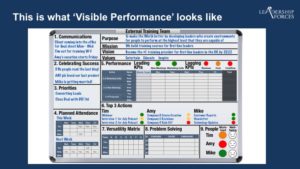A few clients have been asking me if I can do anything on resilience…
What can we do to improve it? How do we get more of it?
I have been reflecting on resilience. What it means and why some people have it whereas others don’t appear to. I’ve been thinking about my time in the Corps and how Commando Training Centre takes civilians and develops them into Royal Marines – building resilience in the process.
I believe that resilience is forged through hardship.
I think that anyone who has spent time in difficult circumstances will know this to be the case. It doesn’t matter if you volunteered for it or the circumstances were placed upon you. We only know how far we can go once we have tested and gone beyond our perceived limits.
The Royal Marines get sent to do difficult and dangerous jobs. It’s part of the deal so resilience is a prerequisite.
Without it, we wouldn’t be much good on the battlefield.
This need for resilience filters back to the recruitment and selection of people for the role. Every potential Officer or Recruit will get asked – ‘Why do you want to join the Corps?’ The answers vary between individuals but is usually irrelevant.
‘Wanting’ is not enough, wanting allows you to try. To survive the course, you need to be clear in your mind that you will never give up. You need to anchor yourself to a purpose, a reason for joining, that will keep you there through thick and thin. Without that purpose, you are unlikely to survive the process because only those with a strong enough anchor point, a strong enough purpose can stay the course.
But the Corps serve in unusual circumstances, far removed from the office environment.
So why do some bosses want to build resilience in their people?
They’re not leading them on the battlefield – why are they looking to develop this characteristic?
I believe that they are looking for people who are able to handle stressful situations and keep going.
The relationship between performance and stress is shown in the graph below. A certain level of stress is necessary to perform. Without it, an individual starts to rust. This is one of the reasons that anyone who wins the lottery gets offered counselling. Some people will struggle to get out of bed in the morning without a reason to.
The other end of the spectrum is burnout. This is equally unhealthy. When you are unable to manage all the tasks/activities you have on your plate and you’re working longer and longer hours to get things done. This is unsustainable in the long-term and can be very damaging to a person’s health.
I think that there is a perception amongst many leaders that the majority of their people are close to burn-out. I don’t think that this is always the case. Everyone says that they are busy – that doesn’t mean that they are!
The reality is that in any team, there will be peaks and troughs of work and some people will be known for ‘getting stuff done’.
These are the people who tend to suffer from burn-out because these are the people who always deliver. They are reliable so they end up getting over-loaded with tasks. Other people in the team do not carry their weight. They hide behind statements like, ‘I’m too busy to take anything else on…’ These are the people who do not deliver and therefore often get asked to do less!
If you want something to do – ask a busy person. It’s a great mantra… unless you are that busy person!
This is when leaders start looking to develop resilience. They want to get more out of the people that they’re already overloading. But this isn’t what is required. Unless you can prove that everyone in the team is overloaded, resilience training does not fix the problem in the long-term.
In the modern office, it is hard to establish who is doing what and where the bottlenecks are. Every business has a sense of flow. ‘Stuff comes in’, value gets added, it gets sold on for a mark up which delivers a profit.
In the manufacturing sector, it is easy to see this because you have a line. If the line stops, you know there is a problem and that you’re no longer producing. You know that as a leader, you have to do something to get things moving. It is easy to find the bottleneck, provide support and get the line going again.
In the service industry, you don’t have that level of clarity. There is no line.
That’s why you have to make it clear who is doing what. How does it contribute to the KPIs which should achieve the vision that we have set for ourselves.
If it isn’t clear, who is doing what. How can you be confident that the workload is balanced across the teams?
The performance centre (below) is an example of a simple tool that makes your team’s performance visual.
If you can see it, you can manage it.
You can see who is overloaded and who has spare capacity on a daily basis because you get around this board and have a conversation about performance every day.
This is data based decision making.
It makes leading easier because you know who is working on what tasks.
Leaders who want to build resilience tend to be overloading a few of their team who ‘get things done’.
This isn’t fair and leads to stress and burnout for some whilst others rust.
The performance centre makes it clear who is working on what so you can level the workload. Once you’ve levelled the workload, you might find that you don’t need to build resilience after all!







